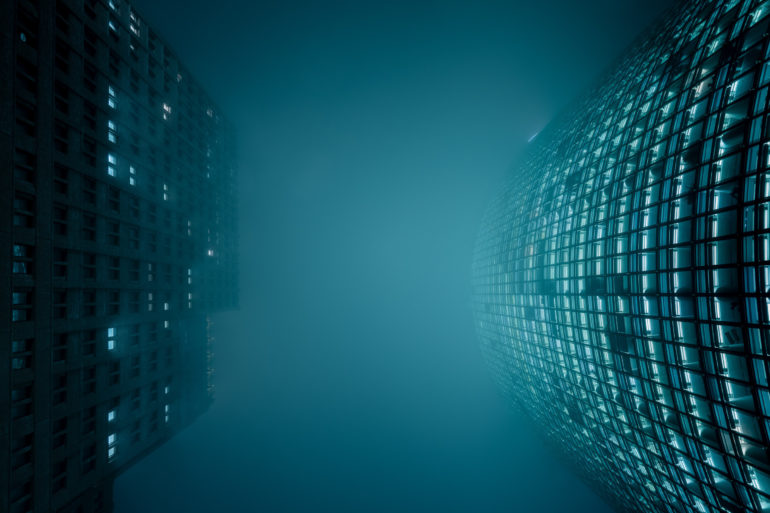It is an ambiguous statement; The beauty of artificial light is its versatility, allowing the photographer to position and create shadow, contrast and false or unnatural colouration within an image. The beauty of artificial light is the ‘otherworldly’ images that can be created or captured, particularly at night and in conjunction with water in its various states (puddles, mist, fog or even large bodies of water to offer up great abstractions).
For me it is when these light sources combine with the elements. For this reason I was drawn initially to the work of Rut Blees Luxemburg as it was recommended in our coursework. I then found the work of Andreas Levers which really captivated me.
Luxemburg’s work struck a chord of familiarity with me, and so I looked back through some of my own work and was amused to see how similar some of my own work is to hers. I found that this link somehow detracted from her work, as the results of my work were often accidental, but through analysis I felt that it was quite easy to obtain a ‘streets of gold’ effect when combining tungsten street lighting and wet surfaces, in particular pavements and roads.




Turning my attention to the newly discovered (for me) Andreas Levers; Looking at Lever’s project ‘At Night 4 (2016)’, most of these images would be quite bland if it weren’t for his very clever use of fog and mist. Many of the light sources in his images are either points straight ahead or are very high up so that the effect on the ground is very diluted. The density of the water molecules in the air act as a diffuser, spreading the light out and softening the shadows in the same way as a studio photographer would use an opaque umbrella to soften the light falling on the subject.
In an interview with Chris Gampat for The Phoblographer 1 , Levers discusses how he arrives at his final images. His camera is the now slightly dated Canon 5d MkII, which I took comfort from, as this is what I am still using. A large part of quality imaging comes from the lens that is being used, but with his work a major factor which has to be considered is the light (lack of) and its quality. Even though ISO’s numbers have now gone stratospheric, the MKII is able to cope and produce good quality images as can be seen below.

His inspiration for images such as these come from films like Blade Runner, Drive, Matrix and Dark City. When asked about post production, he said
“…. Most important is an intentionally shifted white balance and split toning. I keep some of the past looks as presets to quickly try different colour gradings and adjust them based (on) the individual images. Another ingredient are local adjustments, primarily contrast and exposure, to focus the attention on key elements. Subtle adjustments of clarity and sharpness add further cues to guide the viewer’s eye.”1
I am currently trying to keep away from post production wherever possible. This is not for any other reason than the time constraints of doing a degree and also trying to see exactly what sort of work I can produce by solely using the camera. In doing so this should give me a solid platform from which I can build in the future.
References